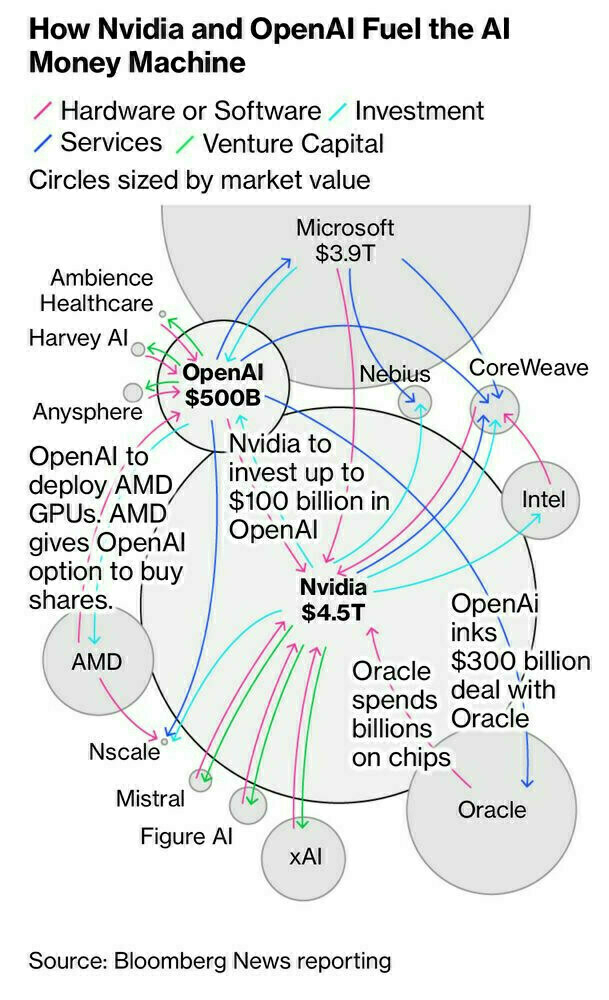Ratcheting up the risks of a possible AI bubble by inflating the market and binding the fates of numerous companies together

This diagram has been shared multiple times in the networks of which I’m part, but I’m mainly including it here as a form of bookmarking for future reference. There have been plenty of articles about AI being a ‘bubble’ this week but as Stowe Boyd points out, “even if there is an AI bust in the near-term, it doesn’t mean there won’t be an AI-dominated economy in the future.”
Never before has so much money been spent so rapidly on a technology that, for all its potential, remains largely unproven as an avenue for profit-making. And often, these investments can be traced back to two leading firms: Nvidia and OpenAI. The recent wave of deals and partnerships involving the two are escalating concerns that an increasingly complex and interconnected web of business transactions is artificially propping up the trillion-dollar AI boom. At stake is virtually every corner of the economy, with the hype and buildout of AI infrastructure rippling across markets, from debt and equity to real estate and energy.
The companies, which ignited an AI investment frenzy three years ago, have been instrumental in keeping it going by inking large and sometimes overlapping partnerships with cloud providers, AI developers and other startups in the sector. In the process, they’re now seen as playing a key role in ratcheting up the risks of a possible AI bubble by inflating the market and binding the fates of numerous companies together. OpenAI alone has now struck AI computing deals with Nvidia, AMD and Oracle Corp. that altogether could easily top $1 trillion. Meanwhile, the AI startup is burning through cash and doesn’t expect to be cash-flow positive until near the end of the decade.
Source & image: Bloomberg